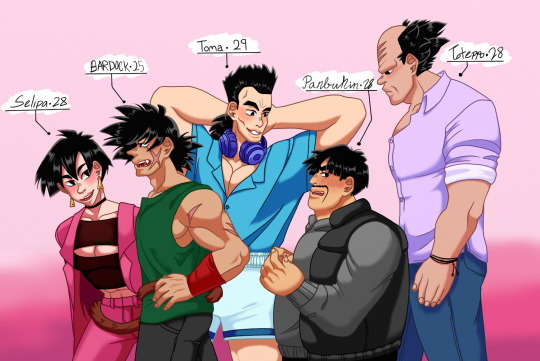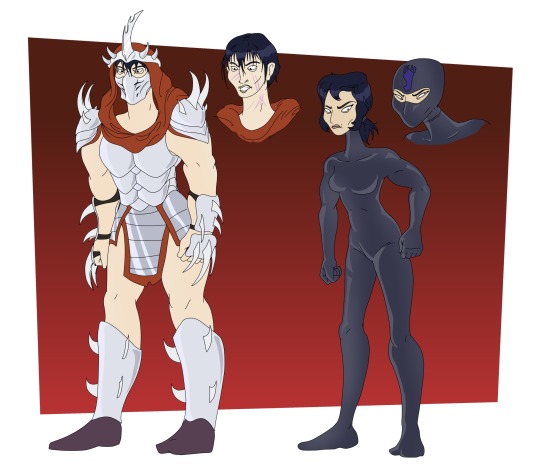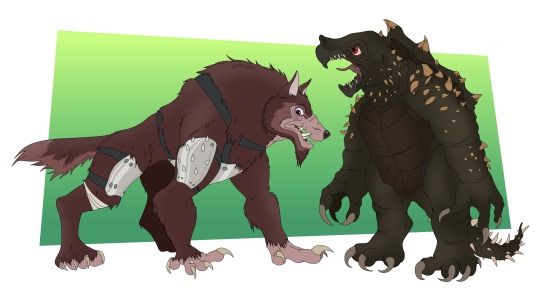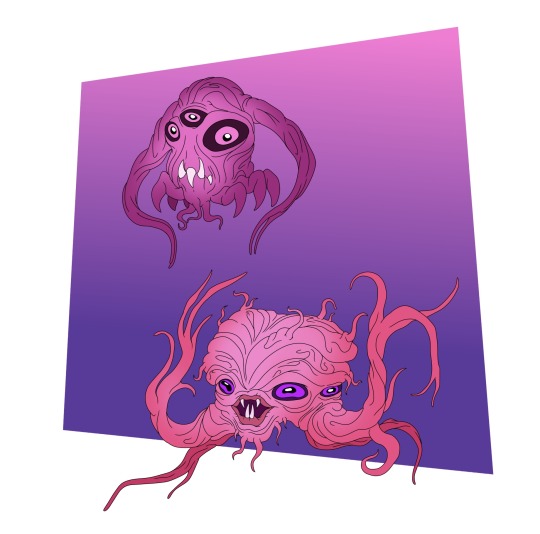#alien teams = pseudo family dynamics
Text
Bardock's gang,, my beloved




I planned to draw one of these comics👆 for each of the members with Bardock, and I might get to that soon,,
ALSO the first post has their names written in their handwriting style lol
For now here's the dynamic between all of em:
Bardock & Selipa = Straight friend x Lesbian who needs a fake boyfriend to chase away creepy men
Bardock & Toma = Virgin ((shocker)) x Promiscuous
Bardock & Panbukin = Bully x Victim ((yes bardock would bully him like an eighth grader))
Bardock & Toteppo = not much to say here, Toteppo unnerves almost everyone on the team
#i also need to do one for the crusher corps 😭😭😭#alien teams = pseudo family dynamics#dysfunctional or not LOL#bardock#Selipa#toma#panbukin#toteppo#dragon ball#eggoart#repost#eggomics
27 notes
·
View notes
Photo





TMNT, ArtMakerProductions Edition (#2)
Shredder, Karai, and Tokka and Rahzar: Very much like in the TMNT II film, they were taken from a zoo and mutated; them being a wolf and alligator snapping turtle, (opposed to Ralph, him being a common snapping turtle). At a later point in this interpretation of the series, w/ the reveal of Shredder’s gender, and Karai enters the picture, the two are “born” so to speak. Identical to the film, they misinterpreted Shredder’s words, “Master” as “Mamma”. Imprinting on her, showing total obedience. Only tolerating the two idiot infant minded mutants as their great strength is an attribute to her clan worth the idiocy. Despite the species difference, Tokka and Rahzar see one another as siblings. Both being roughly the same age, mentally. Here’s where things start to get shaken up. At some point, Shredder orders Karai to chaperone the two, the three serving as a B-Team in a sense, and making small talk (being about the extent of the two’s dialect), Rahzar innocently ask if Shredder is her “Mamma” too. Karai says that yes, Shredder is her mother. Tokka and Rahzar glance at each other, “Si-si-sis-tha.” They say. And just like with Shredder, they embrace Karai repeatedly saying “sistha”. Over the course of their time together, Karai does indeed start to warm up to the two and see the dummies as her little siblings, weirdly enough. Tokka and Rahzar are highly defensive of her. Following her command and lead, as they would with a big sister. The two, Karai and Shredder are meant to be a sort of twisted, dark reflection to the Turtles’ family dynamic. Here being an abusive household, rather than a healthy one.
Utroms and Kraang: Long ago, the Utroms and Kraang were once a civilization where both entities were of equal grounds, but as time passed and their technological advancements bloomed greatly, the Kraangs’ ego went to their heads and soon saw themselves as the superior thinkers to their lesser relatives and their own higher intellectual status and larger cranium. Now the Utroms serves as the roustabouts and workforce of the Kraangs. Handling all the machinery and work handed to them by the Kraang. Because of this mindset they began conquering other planets and place them under their rule of the Kraang. Many revolutions rose and fell over the millennia, w/ several Utroms siding with the planets they were conquering. Those that didn’t simply self exiled, escaping their home world and fleeing to the farthest corner of the galaxy, earth, assimilating into human society. All hoping that the Kraang wouldn’t reach their spot on the Milky Way.
Renet the Time Mistress: Is mostly in character w/ previous incarnations. Where she originates is unclear and never explained: she either claims to be from the far off future, an alternate timeline of the future, invented time travel herself and is from the present day, or from an alternate dimension called: The Time-ension. No one really knows. Energetic, immature, clumsy, brash and a goofball. When Renet visits the turtles, she usually hangs out w/ Mikey and Casey as she finds the two the most fun to hang out with; and they find her time bending abilities cool.
Triceratons: To go along with my interpretation of the Triceratons, being quadrupeds w/ artificial limbs, a 2nd dinosaurian alien race, the Pteranotons. A highly intellectual pterosaurian group that share the same goals and ideals as the brutish three-horned dinos. Inspiration being the Mahars, and that species of arboreal pterosaur w/ the pseudo thumb discovered not too long ago.
Full gallery w/ additional context: https://www.deviantart.com/artmakerproductions/gallery?q=TMNT
#teenage mutant ninja turtles#tmnt#tmnt fanart#digital art#fanart#teenage mutant ninja turtles fanart#tokka#rahzar#kraang#krang#shredder#karai#triceratons#redesign#reimagined#digital
19 notes
·
View notes
Text
I freaking loved American Assassin! Is it a movie that's going to make me ponder philosophical ideas for the next week? No. But honestly who would think it would be? The action was great. Fast and clean. All the armed combat and hand to hand reminded me a bit of the Bourne movies, using real techniques and keeping everything practical and efficient, rather than having showy Hollywood stunts.
More thoughts under the break to avoid spoilers.
The camera work for the beach shooting at the beginning was awesome. It felt super first person-ish, but with wide angles and great detail zooms. You really got the whole picture while also being immersed right in the attack. It felt so intense and I loved how that heightened the emotion of the scene and added a bit of trauma for the audience. Whenever the event is brought back for Mitch his PTSD from it feels so much more authentic, not just because we know he went through something unspeakable, but because it felt like we had been right there on a beach in Ibiza with him. I loved the symmetry of him grabbing the blade in training and in his last fight for his life because it just represents him up so well as a character. Not only is it such a great indication of his unpredictability and unique background, but it also really shows his tenacity. He's not exactly suicidal in his efforts to do what he thinks is right, he does want to live, but he also becomes so focused in the moment of action that his own well being or pain gets pushed so far down in the name of accomplishing what he has set out to do.
Annika was awesome. She constantly carried an air of "I know something you don't" as well as wearing her sexuality easily and naturally. Is she beautiful? For sure. Could she be a deadly seductress? Easily. Is it shown that she's the person that makes things happen for the team in the field? Multiple times. But she never forcefully bats her eyes at someone. She never seems to suddenly turn on this 'womanly pervasiveness' that is so often shoved at us in espionage and action films. There is something in her natural demeanor that draws the eye and a competency that demands respect. She was badass, and principled, and noble, and appreciated for those qualities over her potential as a female tool of distraction. I loved how she was written and played.
The contrast between Mitch and Ghost/Ronnie was another really cool aspect. Sure, you could consider them as very similar - Hurley's boy and Hurley's boy 2.0 - Ronnie basically says as much himself. But what I love most about how they are different is that despite them both being scarily good at what they do, and similarly unpredictable / insubordinate, they could never really be truly the same because of how they came to work for the CIA. Ronnie seems to have had a bad home life, not just a lot of loss, but alienation from his family. He also was in the Navy - probably the first place he felt part of something - and the 'no man left behind' thing must be a lot harder to train out of somebody that came to Orion from the military. Add his recognition of Stan Hurley as a much needed father figure and it's easy to see how an already wobbly individual being left behind could come to hate the country they feel has abandoned them. Mitch on the other hand, despite any human compassion he has for fallen comrades like Victor, doesn't expect the CIA to ever save him if needed. He doesn't have an inherent loyalty to them, and instead uses them as a means to an end. He looks after his fellow operatives, but he's not there to be a part of some pseudo family. He's there to complete his own mission. The Orion team facilitates that, so what patriotism he might have aligns easily with his own personal priorities.
The dynamic and history between Irene Kennedy and Stan Hurley is another thing I really like, as well as the tiny tidbits of humor dispersed throughout the film. Whew. Okay, I gotta stop yammering on now.
#american assassin#dylan o'brien#mitch rapp#taylor kitsch#micheal keaton#stan hurley#annika#irene kennedy#sanaa lathan#shiva negar#spoilers#read more
41 notes
·
View notes
Text
Weekend Top Ten #290
Top Ten Thoughts on Close Encounters
Close Encounters of the Third Kind is my favourite film ever. I’m a huge Spielberg fan at the best of times, but to have a melange of cute kids, government conspiracy, alien invasion, awesome special effects, a magical score, Richard Dreyfus, AND Bob Balaban with a beard – why, it’s the perfect storm.
I’m absolutely sure I can trace a lot of my interests and preoccupations to this film. I first watched it when I was probably about ten or so – around about the time I first saw films like Blade Runner. It opened my mind to darker, more confusing sci-fi: sci-fi that may proffer answers but still allows us to ask our own questions. Despite its family-friendly aura, Close Encounters is a resolutely grown-up experience. And I’m gonna talk about why.
I went to see the spruced-up 4K restoration this week, and I decided to Top Ten-orise my thoughts on Spielberg’s masterpiece. Do please read and enjoy. I have rather gone to town this week.
It’s surprisingly bleak: Roy Neary’s breakdown is convincingly and hauntingly portrayed by Dreyfuss, and the resulting toll it takes on his family is difficult to watch; Barry Guiler’s abduction is suitably terrifying; and the whole film centres on a government willing to commit crimes to cover up the truth. There is a stream of uncomfortable darkness running through this film which belies its optimistic reputation.
People act badly for good reasons: Roy neglects his family and ultimately abandons them, but is chosen by the aliens, essentially an ambassador for our species, and presumably opens a door to future cooperation and communication; the government imprison, belittle, confuse, and terrify the populace in order to keep the aliens a secret, but it’s all so they can safely communicate with them; and the aliens themselves disrupt and arguably ruin multiple lives with their behaviour. The film seems to be saying that although we will end up in a place of peaceful cooperation, the road there will by necessity be dark and dangerous, and we won’t all make it.
The Barry Guiler scenes are straight-up A-grade horror: most film fans know the story of Spielberg’s Night Skies, an unmade pseudo-sequel to Close Encounters, that was a mash-up of alien invasion and home invasion and essentially morphed into both E.T. and Poltergeist. But here, the scenes of the aliens toying with and ultimately abducting Barry Guiler remain terrifying, Melinda Dillon’s performance as anguished mother Jillian conveys the horror of the situation. A reminder that Spielberg is an absolute master at tension and set-piece.
The scale is, frankly, enormous: there are at least three plot strands which cover multiple characters and several countries; there are sandstorms in Mexico, multiple vehicles in China, and a huge army of extras in India; there are abandoned aircraft and a boat in the desert; scores of drugged livestock; and, of course, the epic conclusion at Devil’s Tower. And this is before we discuss the ground-breaking special effects. This is the work of a ferociously confident young man (Spielberg was barely thirty) who knew exactly what he wanted to accomplish and grasped with both hands the opportunity afforded him following the surprise success of Jaws. The film is only 130 minutes long, but make no mistake, this is an epic.
The Lacombe strand is a fantastic detective story: when I first saw the film as a boy, I don’t think I quite grasped exactly what Lacombe, Laughlin, and the others were attempting to accomplish. I knew, obviously, that old, missing vehicles had started randomly re-appearing, and this was the work of aliens; but watching it again it struck me how well-constructed this branch of the story is. It is a gradual unravelling of the aliens’ actions and motivations, their previous history with Earth, and the asynchronous nature of their timeline. By making one character French and the other a newcomer to the situation, it keeps the audience relatively in the dark, the nature of the government’s work uncovered piece by piece with each fresh development. It is, in fact, a masterfully told detective story which reveals its true nature in parallel to the humane stories of Roy and Jillian.
In order to speak to aliens, mankind has to speak to each other: obviously one of the big themes of the film is mankind coming together in this glorious communion with alien life. But witness the aforementioned detective story: Lacombe and his team journey across the world speaking through multiple interpreters all the time, gathering information from Mexicans, Indians, and more. This is perfectly illustrated in the dynamic between Lacombe and his interpreter Laughlin. And once mankind has pieced together as much of the picture as they can, they then have to translate it into this universal language of music, revealed in John Williams’ iconic theme. Do-da-do-daa-dooooo.
The pace is perfect: with so many balls up in the air, it’s amazing how expertly tuned this film is; so many moving parts but it’s graceful, swift, with no drag whatsoever. The opening is slow-build tension, but once Roy has his encounter, it all kicks off, incident adding onto incident like so much mashed potato on a plate, building to a crescendo as Roy and Jillian, fugitives, sprint through the foliage around Devil’s Tower. And then the film stops: once they’re at the camp, everything slows right down again. It allows us to breathe, allows us to relax into the aliens’ visitation. There’s no real tension, no sense of threat; it’s a majestic, serene, otherworldly experience. A beautiful, perfect ending to this perennially optimistic dark conspiracy thriller.
The finale is purer Spielbergian optimism: I’ve already spoken about the darkness in the film, about the bad decisions and bad actions undertaken by its protagonists. But let’s be real – this is a film about wonder and hope, a film that promises no matter how bad it is down here, up there, things are pretty much great. It’s almost religious in its optimistic vision of the future. Mankind comes together at the end, all animosity forgotten, to join hands across the galaxy. Roy is embraced as a sort of surrogate star-child; the missing Barry is reunited with his mum; and Lacombe gets to communicate directly with the adorably babyfaced alien. Then, even as the credits roll, we follow the mothership back up, safe in the knowledge that they’re out there, that life persists and it is good.
The effects still hold up: as with Jaws, many of the more impressive moments are subtler: the lights rising behind Roy; the huge shadow gliding across the landscape; the UFOs that appear just as pinpricks of light. By imbuing lens flares with character and life, Spielberg ensures that they remain convincing even in a world of wall-to-wall photorealistic CGI. When we do finally see detailed craft – they are beautiful and sumptuously detailed, especially the mothership. But my favourite effect in the movie remains the moment a UFO flies over Roy’s truck and makes the gravity go haywire. I know how they did it, but it just looks so cool.
This is totally Spielberg’s vision: I know first-hand that TV and film are collaborative artforms, but there’s definitely something to be said for auteur theory. Because this is, unquestionably, the vision of Steven Spielberg. How many of his preoccupations are referenced: aliens; everyday heroes; children; blue-collar American families; earnest men in suits; and even World War II, in the shape of the returned aircraft. He is credited as director and writer, one of only two times he’s taken on both roles in his filmmaking career (the other being A.I.). he is even credited as coming up with the visual effects concepts – clearly, he was deeply, personally, phenomenally invested in this movie. The success of Jaws opened so many doors for him, he could do more or less whatever he wanted, and this is what he chose to do. More than the themes, more than his stylistic traits (the use of god-lights and silhouettes, for instance), more than John Williams or Richard Dreyfus, what makes Close Encounters quintessential Spielberg is that, at the end of the day, across the whole universe, it’s a story of broken and divided people reuniting. It’s got the most optimistic, happy ending of his career (Roy’s neglected family notwithstanding). It’s beautiful, serene, fantastical, and majestic. Like Jaws, Raiders, and E.T., the film is more-or-less perfect, or at least as perfect as a film has any right to be. And I finally got to see it on the big screen. Yay for me.
#top ten#close encounters of the third kind#close encounters 4k#close encounters 40th#ce3k#steven spielberg#movies#films
0 notes